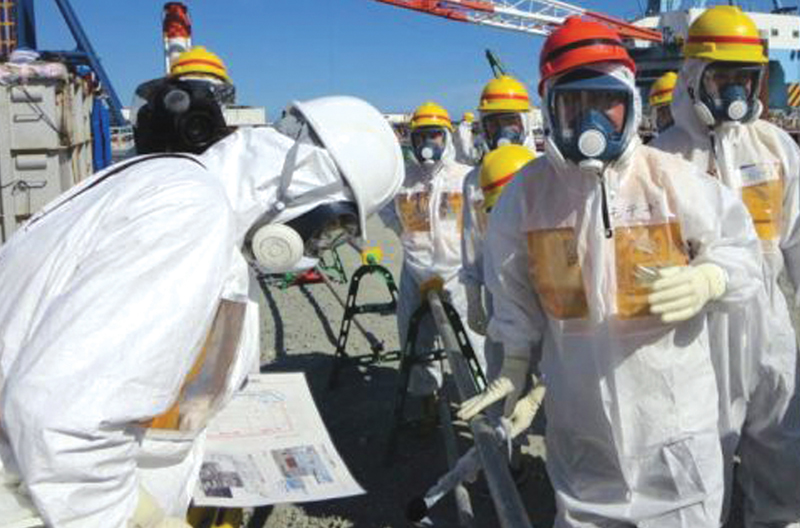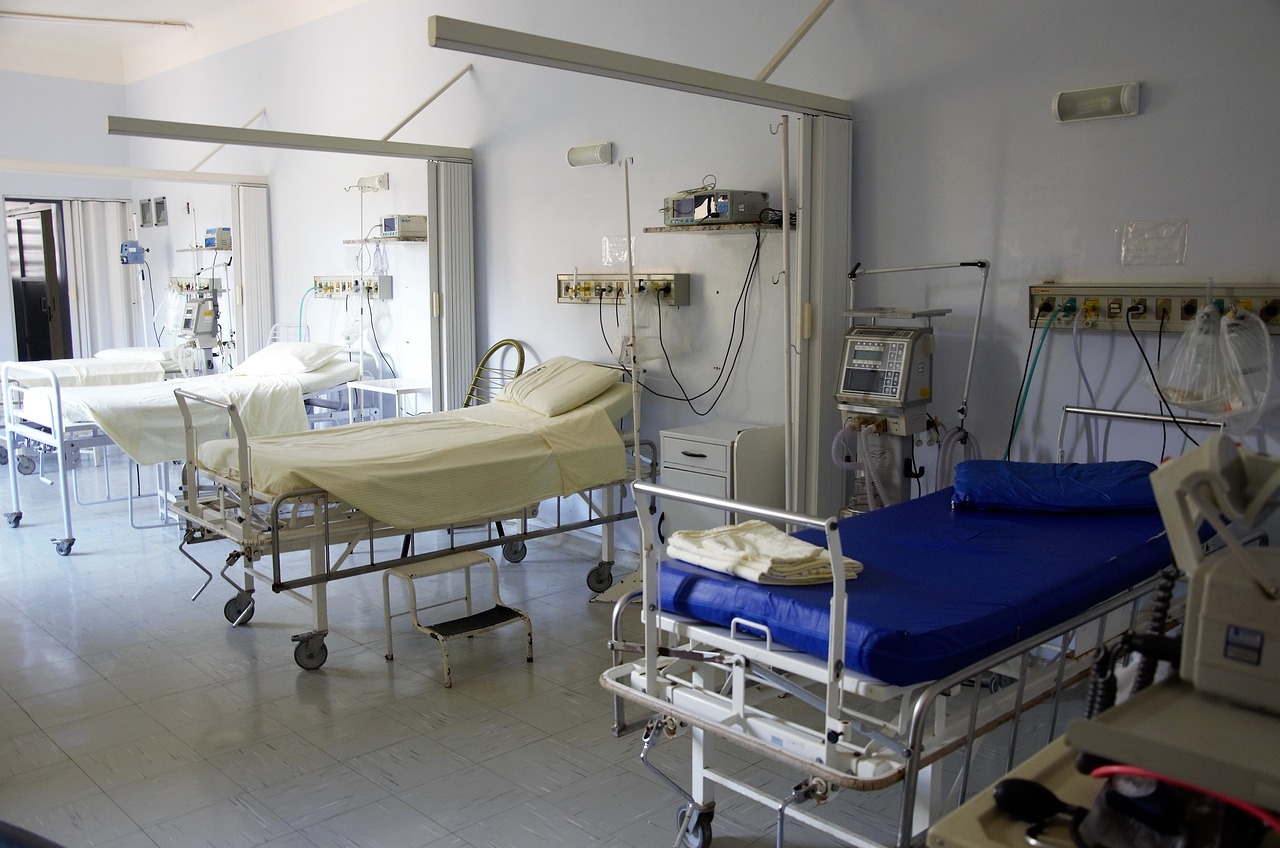Fukushima aftermath still haunts Japan

The crisis at Japan\’s Fukushima nuclear plant \”has not ended\”, the country\’s nuclear watchdog has warned, saying the situation there is still \”unstable\”.
Fukushima Watchdog chief Shunichi Tanaka has accused the plan\’s operator
of careless management during the original crisis, resulting in the recent spate of leaks. He added that it may not be possible to avoid dumping some contaminated water into the ocean. The comments come a day before the Japanese government is due to unveil plans to rescue the clean-
up operation.
Mr Tanaka\’s comments come after Fukushima\’s operator, the Tokyo Electric Power Company (Tepco), said radiation levels near one tank were 18 times higher than previously thought. However, Mr Tanaka said that reports that this level of radiation could be lethal to workers after four hours of exposure were exaggerated.
\”Supposing the figure of 1,800 millisieverts per hour is correct, it is beta radiation. It will not penetrate as long as there is a 5-10 millimetre-thick plastic shield or you wear leather shoes,\” he said.
The damage to the plant from the 2011 tsunami has necessitated the constant pumping of water to cool the reactors. The process creates an extra 400 tonnes of contaminated water every day. It was revealed last month that some of that water was leaking from storage tanks at the site.
On Monday, Tepco said a patrol of workers had found a new area of high radiation near the tanks. Mr Tanaka told reporters that the only long-term solution to the problem of contaminated water was to filter it and that it might \”not be possible to avoid dumping it in to the sea\”.That is a decision which will be extremely unpopular with local fishermen and possibly also with Japan\’s neighbours.
The plant was crippled by the 2011 earthquake and tsunami and the plant has since been hit by a series of water leaks and power failures. The tsunami knocked out cooling systems to the reactors, three of which melted down. The latest leak is believed to be the fourth major leak from storage tanks at Fukushima since 2011 and the worst so far in terms of overall volume. Experts have said the scale of water leakage may be worse than officials have admitted.
The “Ice Wall” Strategy
The Japanese government is now planning to invest hundreds of millions of dollars into building a frozen wall around the Fukushima plant to prevent recurring leaks of radioactive water. Government spokesman Yoshihide Suga said an estimated 47 billion yen ($473m, £304m) would be allocated for the project. The leaks are exacerbating what is already a highly unstable situation at the site of the Fukushima plant and the government felt “it was essential to become involved to the greatest extent possible\”, Mr Suga said.
Water is now being pumped in to cool the reactors, but storing the resultant large quantities of radioactive water has proved a challenge for plant operator Tokyo Electric Power Company (Tepco). Under the government plan, a wall of frozen earth will be created around the reactors using pipes filled with coolant to prevent groundwater coming into contact with contaminated water being used to cool fuel rods. Water treatment systems will also be upgraded to tackle the build-up of contaminated water, officials said.
The damage to the plant has necessitated the constant pumping of water to cool the reactors – a process which creates an extra 400 tonnes of contaminated water every day. That water is being stored in temporary tanks at the site. Last month Tepco said that 300 tonnes of highly radioactive water had leaked from one of the tanks, in the most serious incident to date. Satellite images have shown how the number of water storage tanks have increased in the past two years. The tanks store contaminated water that has been used to cool the reactors. However, in recent months there have also been leaks from pipes and there are concerns that water is seeping from damaged reactor buildings into the ground.
Last month, Japan\’s nuclear regulator classified the severity level of radioactive water leak issues at Fukushima as a three on the seven-point International Nuclear and Radiological Event Scale (Ines). The triple meltdown at Fukushima two years ago was classed as a level seven incident, one of only two nuclear events ever rated that highly – along with the 1986 Chernobyl disaster in the former Soviet Union.
The world is closely watching whether we can dismantle the (Fukushima) plant, including the issue of contaminated water,\” said Japanese Prime Minister Shinzo Abe.
\”The government is determined to work hard to resolve the issue.\”
The funding pledge comes days before a decision is due on the host nation for the 2020 summer Olympic Games, for which Tokyo is a candidate. Meanwhile, one of Japan\’s two remaining nuclear reactors still online was shut down on Tuesday for mandatory inspections. The shut-down of Kansai Electric\’s Oi Unit 3 reactor will leave the plant\’s Unit 4 reactor the only remaining one still functioning in Japan. Unit 4 must also be taken offline later this month for routine assessment. Restarting Japan\’s other nuclear reactors remains a highly controversial issue, but the government is working to get this done as quickly and efficiently as possible in order to fill an energy gap.
FUKUSHIMA – Timeline of disaster
March 11, 2011 – Earthquake hits at 2.46pm followed by tsunami, causing extensive damage to the Fukushima Nuclear Power Plant
March 12 Although unknown at the time, core of Reactor 1 suffers meltdown. The first of a series of explosions takes place at the plant. Evacuation zone extended to 12miles.
March 14 Six workers are injured in an explosion in the Reactor 3 building. A significant surge and then fall in radiation levels released by the plant are recorded.
March 19 Radioactivity exceeding legal limits detected in milk produced in Fukushima area and vegetables in Ibaraki
March 23 Officials warn tap water in Tokyo is not safe for babies to drink following radiation contamination. Levels return to normal the following day.
March 24 Two workers are taken to hospital after radioactive waters seeps through their protective clothing.
March 26 Radiation levels in seawater near the nuclear power plant increases to 1,850 the limit.
April 1 Along with leafy vegetables and parsley, beef with radiation levels above regulatory limit also reported.
April 22 Residents of Iitate and four other villages asked to evacuate due to radiation levels.
May 11 Caesium levels in tea leaves cultivated south of Tokyo exceed government limits.
June 30 Radiation contamination found in urine of ten children tested by a citizen\’s group.
July 19 All transport of beef raised in Fukushima prohibited, with an ensuing national crisis after cattle fed on contaminated hay distributed around the country.
July 26 Children in Fukushima are guaranteed lifelong testing for internal radiation levels.
September 8 Calculations by the Japan Atomic Energy Agency find that a total of 15,000 terabecquerels of radiation were released into the sea from the damaged plant.
September 29 The core temperatures for all three damaged reactors is now below 100C for the first time.
October 28 The damaged Fukushima plant was found to have released twice as much radioactivity into the atmosphere as the authorities initially estimated, according to a report by the Norwegian
Institute for Air Research study.
FUKUSHIMA ACCIDENT RATING
The severity of the Fukushima nuclear accident has been provisionally rated 7 on the International Nuclear Event Scale (INES). This scale runs from 0, indicating an abnormal situation with no safety consequences, to 7, indicating an accident causing widespread contamination with serious health and environmental effects. Prior to Fukushima, the Chernobyl disaster was the only level 7 accident on record, while the Three Mile Island accident was a level 5 accident.
The 2012 analysis of the amount of intermediate and long lived radioactivity released from all the Fukushima Daiichi reactors was about 10-20% of that released from the Chernobyl disaster. The total release from the entire Fukushima disaster, in terms of caesium-137 (which along with strontium-90 are the two primary substances preventing Chernobyl from being inhabited) is approximately 15 PBq of caesium-137 released; by contrast, the amount released from Chernobyl was approximately 85PBq of caesium-137. This is the activity that would be produced by 24 kilograms of caesium-137. Another notable difference between the two accidents is that, unlike Chernobyl, all the Japanese reactors were situated within concrete containment vessels, which contributed to the Japanese accident releasing vastly less strontium-90, americium-241 and plutonium, which were among the radioisotopes released at Chernobyl.
In terms of the most biologically hazardous short lived radioisotope, namely iodine-131, 500 PBq of Iodine 131 were released during the Fukushima disaster. By comparison, approximately 1,760 PBq of iodine-131 were released during the Chernobyl disaster. Iodine-131 has a short half life of 8.02 days; consequently, it decays rapidly to become a stable nucleide. Therefore there is only a short time during which human exposure can occur: after ten half lifes – 80.2 days for Iodine-131 – 99.9% of it has decayed to Xe-131, a stable isotope.
You might also like
For relevant updates on Emergency Services news and events, subscribe to EmergencyServices.ie









